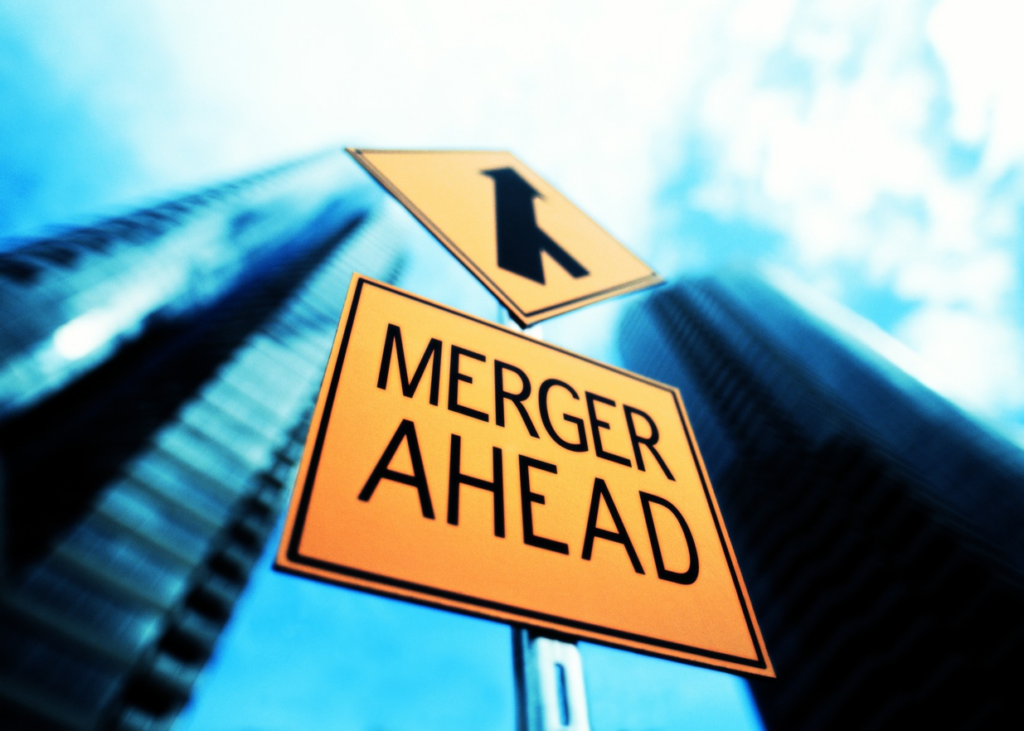Mergers and acquisitions (M&A) are complex transactions. The process often involves not only the acquiring and target companies but also a variety of other stakeholders, including competition law regulatory agencies.
For instance, buyers and sellers are often concerned about how contractual guarantees, taxes, or ongoing litigation might impact a merger or acquisition.
- The terms “mergers” and “acquisitions” are often used interchangeably, but they differ in meaning.
- In an acquisition, one company purchases another outright.
- A merger is the combination of two firms, which subsequently form a new legal entity under the banner of one corporate name.
- A company can be objectively valued by studying comparable companies in an industry and using metrics.
M&A is a practice area of the law, focused on domestic and global transactions aimed at consolidating businesses of two or more companies through legal operations such as mergers, purchase of assets, tender offers, hostile takeovers, among others.
A purchase deal will also be called a merger when both CEOs agree that joining together is in the best interest of both of their companies.
Unfriendly or hostile takeover deals, in which target companies do not wish to be purchased, are always regarded as acquisitions. A deal can be classified as a merger or an acquisition based on whether the acquisition is friendly or hostile and how it is announced. In other words, the difference lies in how the deal is communicated to the target company’s board of directors, employees, and shareholders.
To fully evaluate a merger, analysts must ask two fundamental questions:
- Will the transaction create value?
- Does the acquisition price outweigh the potential benefit?
Most important points of M&A

- An acquisition is the purchase of some portion of one company by another. A merger represents the absorption of one company by another such that only one entity survives following the transaction.
- Mergers can be categorized by the form of integration. In a statutory merger, one company is merged into another; in a subsidiary merger, the target becomes a subsidiary of the acquirer; and in a consolidation, both the acquirer and target become part of a newly formed company.
- Horizontal mergers occur among peer companies engaged in the same kind of business. Vertical mergers occur among companies along a given value chain. Conglomerates are formed by companies in unrelated businesses.
- Merger activity tends to be concentrated in industries undergoing changes, such as deregulation or technological advancement.
- The motives for M&A activity include synergy, growth, market power, the acquisition of unique capabilities and resources, diversification, increased earnings, management’s personal incentives, tax considerations, and the possibilities of uncovering hidden value. Cross-border motivations may involve technology transfer, product differentiation, government policy, and the opportunities to serve existing clients abroad.
- A merger transaction may take the form of a stock purchase (when the acquirer gives the target company’s shareholders some combination of cash or securities in exchange for shares of the target company’s stock) or an asset purchase (when the acquirer purchases the target company’s assets and payment is made directly to the target company). The decision of which approach to take will affect other aspects of the transaction, such as how approval is obtained, which laws apply, how the liabilities are treated, and how the shareholders and the company are taxed.
- The method of payment for a merger can be cash, securities, or a mixed offering with some of both. The exchange ratio in a stock or mixed offering determines the number of shares that stockholders in the target company will receive in exchange for each of their shares in the target company.
- Hostile transactions are those opposed by target managers, whereas friendly transactions are endorsed by the target company’s managers. There are a variety of both pre- and post-offer defenses a target can use to ward off an unwanted takeover bid.
- Examples of pre-offer defense mechanisms include poison pills and puts, incorporation in a jurisdiction with restrictive takeover laws, staggered boards of directors, restricted voting rights, supermajority voting provisions, fair price amendments, and golden parachutes.
- Examples of post-offer defenses include the “just say no” defense, litigation, greenmail, share repurchases, leveraged recapitalization, “crown jewel” defense, Pac-Man defense, or finding a white knight or a white squire.
- Competition law prohibits mergers and acquisitions that impede competition.
- Three major tools for valuing a target company are discounted cash flow analysis (which involves discounting free cash flows estimated with pro forma financial statements), comparable company analysis (which estimates a company’s intrinsic value based on relative valuation metrics for similar companies), and comparable transaction analysis (which derives valuation from details of recent takeover transactions for comparable companies).
- In a merger bid, the gain to target shareholders is measured as the control premium, which equals the price paid for the target company in excess of its value. The acquirer gains equal the value of any synergies created by the merger minus the premium paid to target shareholders. Together, the bid and the method of payment determine the distribution of risks and returns among acquirer and target shareholders with regard to realization of synergies as well as correct estimation of the target company’s value.
- The empirical evidence suggests that merger transactions create value for target company shareholders. Acquirers, in contrast, tend to accrue value in the years following a merger. This finding suggests that synergies are often overestimated or difficult to achieve.
- When a company decides to sell, liquidate, or spin off a division or a subsidiary, it is referred to as a divestiture. Companies may divest assets for a variety of reasons, including a change in strategic focus, poor fit of the asset within the corporation, reverse synergy, or cash flow needs.
- The three basic ways that a company divests assets are a sale to another company, a spin-off to shareholders, and liquidation.
What is the difference between a Merger and an Acquisition? The most common difference between a merger and an acquisition relates to the size of the companies involved.
Both companies involved on either side of an M&A deal will value the target company differently. The seller will obviously value the company at the highest price possible, while the buyer will attempt to buy it for the lowest price possible.

Mergers and Acquisitions (M&A) – Valuation
In an M&A transaction, the valuation process is conducted by the acquirer, as well as the target. The acquirer will want to purchase the target at the lowest price, while the target will want the highest price.
Thus, valuation is an important part of mergers and acquisitions (M&A), as it guides the buyer and seller to reach the final transaction price.
Below are three major valuation methods that are used to value the target:
- Discounted cash flow (DCF) method: The target’s value is calculated based on its future cash flows.
- Comparable company analysis: Relative valuation metrics for public companies are used to determine the value of the target.
- Comparable transaction analysis: Valuation metrics for past comparable transactions in the industry are used to determine the value of the target.
M&A Deal Structure
An M&A deal structure is a binding agreement between parties in a merger or acquisition (M&A) that outlines the rights and obligations of both parties. It states what each party of the merger or acquisition is entitled to and what each is obliged to do under the agreement. Simply put, a deal structure can be referred to as the terms and conditions of an M&A.
- An M&A deal structure is one of the steps in a merger or acquisition. It is important to create a proper deal structure, taking the top-priority objectives of the parties involved into account.
- There are three well-known methods of M&A deal structuring: asset acquisition, stock purchase, and merger, each with its own merits and potential drawbacks for both parties in the proposed deal.
- A proper deal structure will lead to a successful merger or acquisition deal.
Mergers and acquisitions involve the coming together (synergizing) of two business entities to become one for economic, social, or other reasons. A merger or acquisition is possible only when there is a mutual agreement between both parties.
he agreed upon terms on which these entities are willing to come together are known as an M&A deal structure.
Deal structuring is a part of the M&A process; it is one of the steps that must be taken in a merger or acquisition. It is the process of prioritizing the objectives of a merger or acquisition and ensuring that the top-priority objectives of all parties involved are satisfied, along with considering the weight of risk each party must bear.

Initiating the deal structuring process requires all parties involved to state:
- Their stance on the negotiation;
- Observable latent risks and how they could be managed;
- How much risk they can tolerate; and
- Conditions under which negotiations may be canceled.
Developing a proper M&A deal structure can be quite complicated and challenging because of the number of factors to be considered. These factors include preferred financing means, corporate control, business plan, market conditions, antitrust laws, accounting policies, etc. Employing the right kind of financial, investment, and legal advice can make the process less complicated.
How Acquisitions Are Financed
A company can buy another company with cash, stock, assumption of debt, or a combination of some or all of the three. In smaller deals, it is also common for one company to acquire all of another company’s assets.
Company X buys all of Company Y’s assets for cash, which means that Company Y will have only cash (and debt, if any). Of course, Company Y becomes merely a shell and will eventually liquidate or enter other areas of business.
Another acquisition deal known as a reverse merger enables a private company to become publicly listed in a relatively short time period. Reverse mergers occur when a private company that has strong prospects and is eager to acquire financing buys a publicly listed shell company with no legitimate business operations and limited assets. The private company reverses merges into the public company, and together they become an entirely new public corporation with tradable shares.
………………………..
by Tetiana Mykhailova — CFO Beinsure / Commercial Director Finance Media








